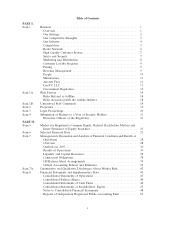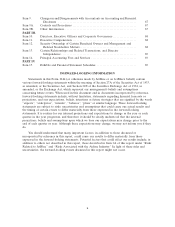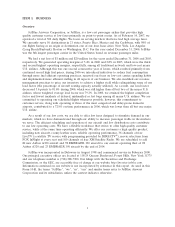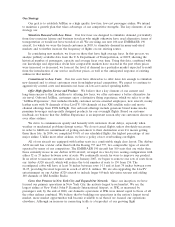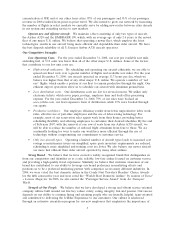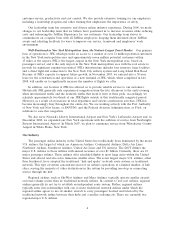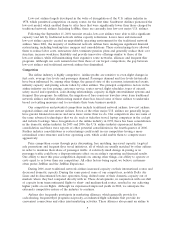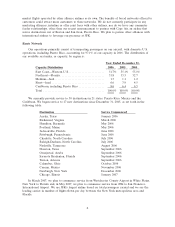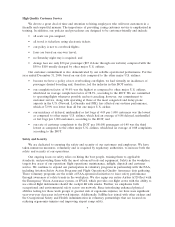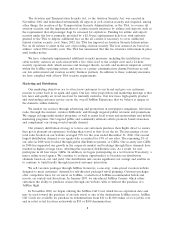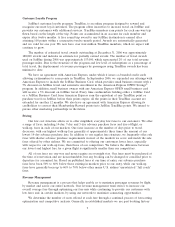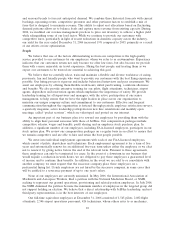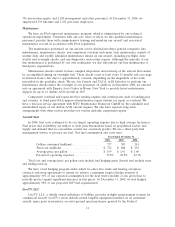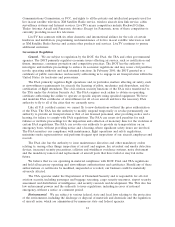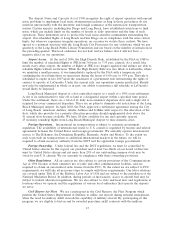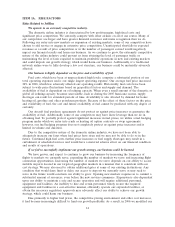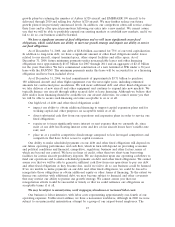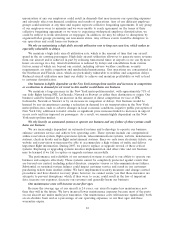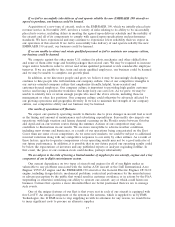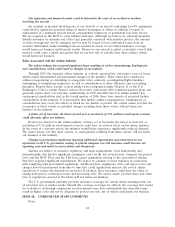JetBlue Airlines 2006 Annual Report Download - page 18
Download and view the complete annual report
Please find page 18 of the 2006 JetBlue Airlines annual report below. You can navigate through the pages in the report by either clicking on the pages listed below, or by using the keyword search tool below to find specific information within the annual report.The Aviation and Transportation Security Act, or the Aviation Security Act, was enacted in
November 2001 and federalized substantially all aspects of civil aviation security and required, among
other things, the creation of the Transportation Security Administration, or the TSA, to oversee all
aviation security, and the implementation of certain security measures by airlines and airports, such as
the requirement that all passenger bags be screened for explosives. Funding for airline and airport
security under the law is primarily provided by a $2.50 per enplanement ticket tax, with authority
granted to the TSA to impose additional fees on the air carriers if necessary to cover additional
federal aviation security costs. Since 2002, the TSA has imposed an Aviation Security Infrastructure
Fee on all airlines to assist in the cost of providing aviation security. The fees assessed are based on
airlines’ actual 2000 security costs. The TSA has announced that this fee structure will remain in place
until further notice.
We have voluntarily implemented additional security measures, including the installation of four
cabin security cameras on each aircraft with a live video feed to the cockpit crew and a 24-hour
security operations desk, which assesses and manages threats, records and monitors suspicious activity
within the JetBlue operating system, and serves as a prime communication channel between us and
our law enforcement and aviation security business partners. In addition to these voluntary measures,
we have complied with all new TSA security requirements.
Marketing and Distribution
Our marketing objectives are to attract new customers to our brand and give our customers
reasons to come back to us again and again. Our key value proposition and marketing message is that
low fares and quality air travel need not be mutually exclusive. Our low fares, high quality product
and outstanding customer service create the overall JetBlue Experience that we believe is unique in
the domestic airline industry.
We market our services through advertising and promotions in newspapers, magazines, television,
radio, through the internet, outdoor billboards, and through targeted public relations and promotions.
We engage in large multi-market programs, as well as many local events and sponsorships and mobile
marketing programs. Our targeted public and community relations efforts promote brand awareness
and complement our strong word-of-mouth channel.
Our primary distribution strategy is to have our customers purchase their flights direct to ensure
they get as pleasant an experience booking their travel as they do in the air. The percentage of our
total sales booked on our website averaged 79%for the year ended December 31, 2006. Our second
largest distribution channel is our agents who accounted for 19%of our sales. The remaining 2%of
our sales in 2006 were booked through global distribution systems, or GDSs. Our re-entry into GDSs
in 2006 has supported our growth in the corporate market and bookings through these channels have
resulted in higher average fares, offsetting the increased distribution costs. As a result, we now
participate in all four major GDSs. In addition, we began participating on a test basis in Travelocity, a
major online travel agency. We continue to evaluate opportunities to broaden our distribution
channels based on cost and yield. Our distribution mix creates significant cost savings and enables us
to continue to build loyalty through increased customer interaction.
We sell vacation packages through JetBlue Getaways, a one-stop, value-priced vacation website
designed to meet customers’ demand for self-directed packaged travel planning. Getaways packages
offer competitive fares for air travel on JetBlue, a selection of JetBlue-recommended hotels and
resorts, car rentals and attractions. In January 2007, we introduced JetBlue Cruises, which offers
customers the ability to purchase cruises through our website, with or without the purchase of a
JetBlue flight.
In November 2006, we began offering the JetBlue Gift Card, which has no expiration date and
may be used toward the purchase of air-only travel to any of the destinations JetBlue serves. JetBlue
Gift Cards are available for purchase in denominations from $10 to $1,000 online at www.jetblue.com
and in select retail locations nationwide in $50 or $100 denominations.
8


